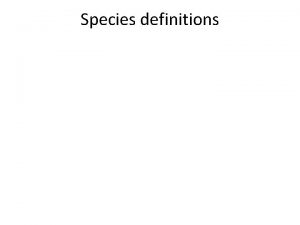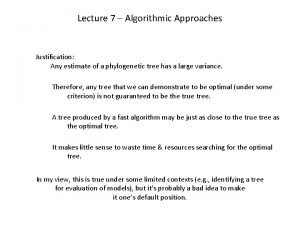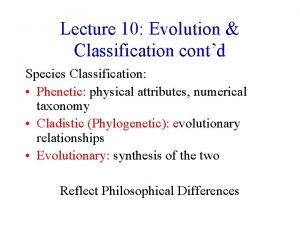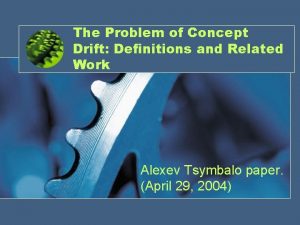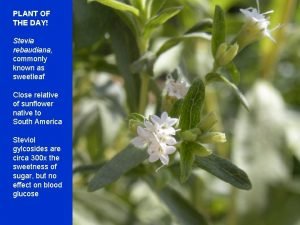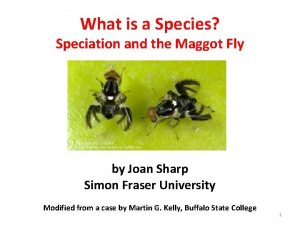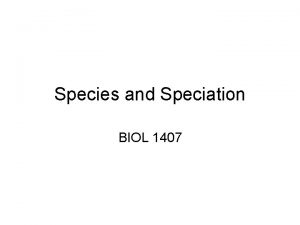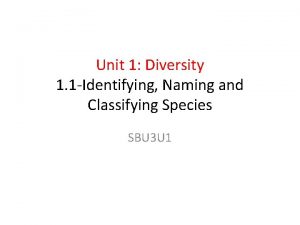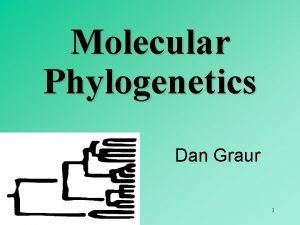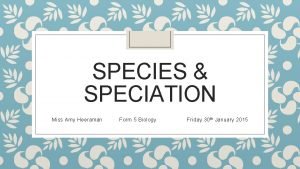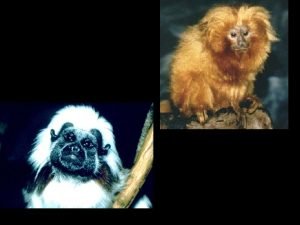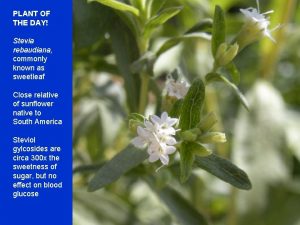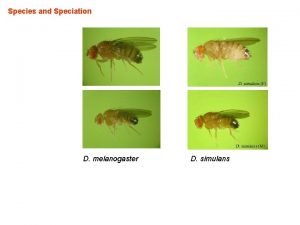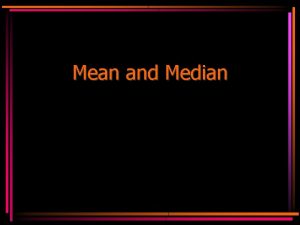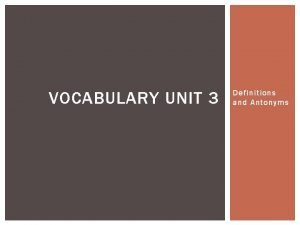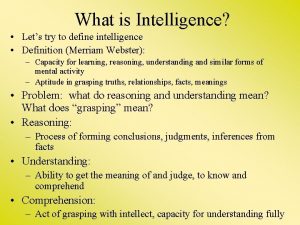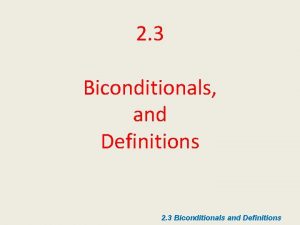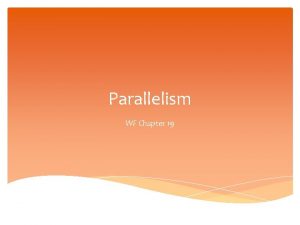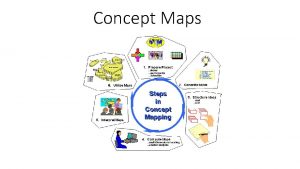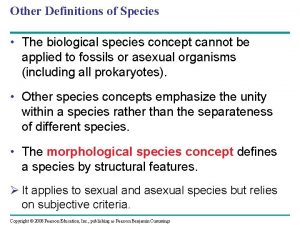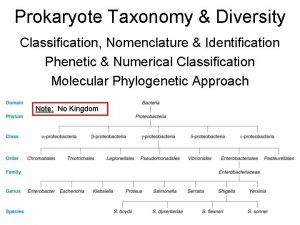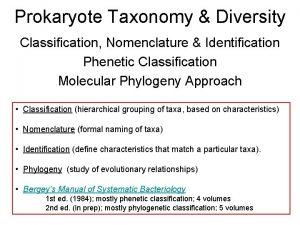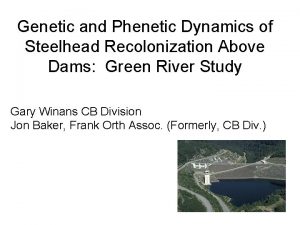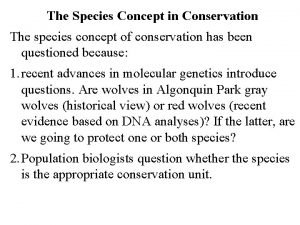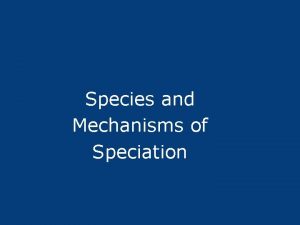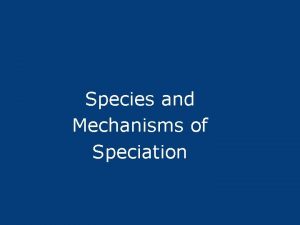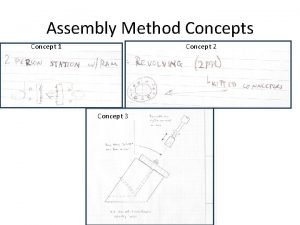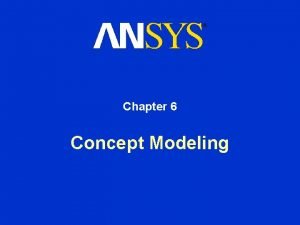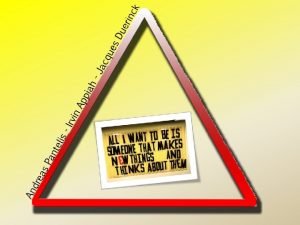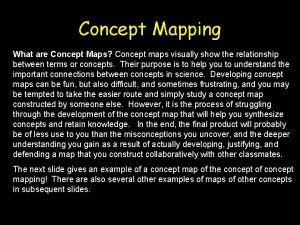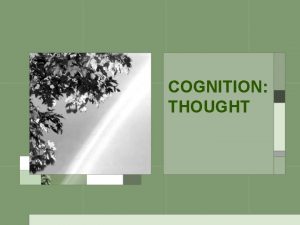Species definitions Phenetic species concept A species is
























- Slides: 24


Species definitions • Phenetic species concept: A species is a set of organisms that look similar to each other and distinct from other sets (Sokal and Crovello 1970).

Species definitions • Phenetic species concept: A species is a set of organisms that look similar to each other and distinct from other sets (Sokal and Crovello 1970). • Ecological species concept: A species is a set of organisms exploiting (or adapted to) a single niche (Van Valen 1976).

Species definitions • Phenetic species concept: A species is a set of organisms that look similar to each other and distinct from other sets (Sokal and Crovello 1970). • Ecological species concept: A species is a set of organisms exploiting (or adapted to) a single niche (Van Valen 1976). • Biological species concept: Species are groups of actually or potentially interbreeding natural populations, which are reproductively isolated from other such groups (Mayr 1942).

Species definitions • Phenetic species concept: A species is a set of organisms that look similar to each other and distinct from other sets (Sokal and Crovello 1970). • Ecological species concept: A species is a set of organisms exploiting (or adapted to) a single niche (Van Valen 1976). • Biological species concept: Species are groups of actually or potentially interbreeding natural populations, which are reproductively isolated from other such groups (Mayr 1942). • Phylogenetic species concept: A species is the smallest diagnosable cluster of individual organisms within which there is a parental pattern of ancestry and descent (Cracraft 1983).

Species definitions • Phenetic species concept: A species is a set of organisms that look similar to each other and distinct from other sets (Sokal and Crovello 1970). • Ecological species concept: A species is a set of organisms exploiting (or adapted to) a single niche (Van Valen 1976). • Biological species concept: Species are groups of actually or potentially interbreeding natural populations, which are reproductively isolated from other such groups (Mayr 1942). • Phylogenetic species concept: A species is the smallest diagnosable cluster of individual organisms within which there is a parental pattern of ancestry and descent (Cracraft 1983). • Evolutionary species concept: A species is a single lineage of ancestor-descendant populations which maintain its identity from other such lineages and which has its own evolutionary tendencies and historical fate (Wiley 1981).


Species (Frost and Kluge 1994) • Species concept: What is a species? – an evolutionary lineage of populations (Evolutionary Species Concept) • Species criterion: How can we tell whether two groups of individuals are separate species? – – Can they interbreed? (Biological Species Concept) Do they occupy different niches? (Ecological Species Concept) Do they look different (Phenetic Species Concept) Does a phylogenetic analysis indicate they are distinguishable by synapomorphies? (Phylogenetic Species Concept)


Species concepts: History • Pre-1942 – Typology – Key reading: Aristotle • 1940 s-1990 s – Key reading: Mayr 1942. Systematics and the origin of species from the viewpoint of a zoologist. – Interbreeding – Lots of philosophical work (Hull, Ghiselin, Hey) • 1990 s-now – Species = evolutionary lineages (Simpson) – Operational/conceptual distinction – Key reading: Wiley 1981, Frost and Kluge 1994, de Queiroz 1998


Speciation Wiens, JJ. 2004. What is speciation and how should we study it?

Speciation • Lineage splitting – dispersal – vicariance

Speciation • Lineage splitting – dispersal – vicariance • Lineage divergence – natural selection – drift

Speciation in action: a ring species

Summary/important aspects of species and speciation • Species are independent evolutionary lineages of populations (EVSC); most species "concepts" (BSC, PHYSC, ECSC, PHENSC) capture operational elements of this

Summary/important aspects of species and speciation • Species are independent evolutionary lineages of populations (EVSC); most species "concepts" (BSC, PHYSC, ECSC, PHENSC) capture operational elements of this • Species are "natural" entities, not human constructs – Subspecies are operational pattern classes

Summary/important aspects of species and speciation • Species are independent evolutionary lineages of populations (EVSC); most species "concepts" (BSC, PHYSC, ECSC, PHENSC) capture operational elements of this • Species are "natural" entities, not human constructs – Subspecies are operational pattern classes • Reproduction is (very) important, but it is just one aspect of species and speciation

Summary/important aspects of species and speciation • Species are independent evolutionary lineages of populations (EVSC); most species "concepts" (BSC, PHYSC, ECSC, PHENSC) capture operational elements of this • Species are "natural" entities, not human constructs – Subspecies are operational pattern classes • Reproduction is (very) important, but it is just one aspect of species and speciation • Speciation involves two steps: lineage splitting and lineage divergence


Species discovery • Phenetic – Find an individual or population in nature that appears different from other known populations – Compare individuals of purported new species to individuals of known species; search for diagnostic differences

Species discovery • Phenetic – Find an individual or population in nature that appears different from other known populations – Compare individuals of purported new species to individuals of known species; search for diagnostic differences • Phylogenetic – Obtain DNA sequences for multiple individuals from throughout the range of a species – Perform phylogentic analysis – Recognize separate clades with some degree of genetic divergence as separate species

Species discovery

Species description • • Designate a Holotype Diagnose the species Describe the Holotype and variation among paratypes Other data – illustrations, range map, ecology, phylogeny
 Phenetic species
Phenetic species Otu
Otu Dicots
Dicots Concept paper meaning
Concept paper meaning The problem of concept drift: definitions and related work
The problem of concept drift: definitions and related work Can plants be keystone species
Can plants be keystone species Biological species concept
Biological species concept Ecological species concept
Ecological species concept Habitat isolation.
Habitat isolation. Morphological species concept
Morphological species concept Types of species
Types of species Ecological speciation
Ecological speciation Horizontal gene transfer
Horizontal gene transfer Genotypic cluster species concept
Genotypic cluster species concept Morphological species concept
Morphological species concept Perbedaan selling concept dan marketing concept
Perbedaan selling concept dan marketing concept Self examples
Self examples What is the median
What is the median Vocab unit 3 level g synonyms and antonyms
Vocab unit 3 level g synonyms and antonyms Operating system definitions
Operating system definitions The gothic genre definition
The gothic genre definition Intelligence vs intelligent
Intelligence vs intelligent Meaning of non-verbal communication
Meaning of non-verbal communication Unit 3 lesson 2 biconditionals and definitions
Unit 3 lesson 2 biconditionals and definitions Parallelism for paired ideas
Parallelism for paired ideas
